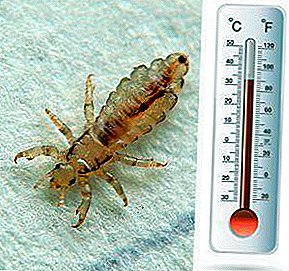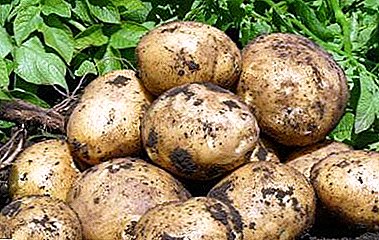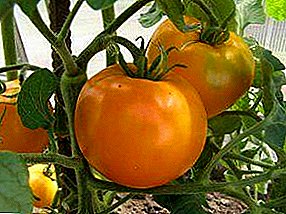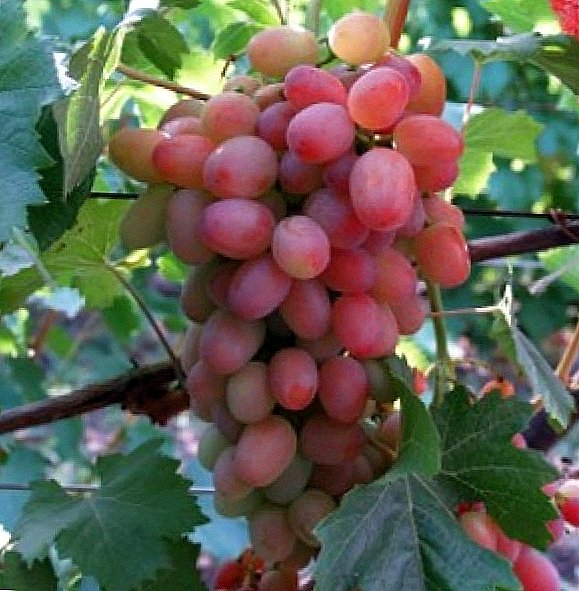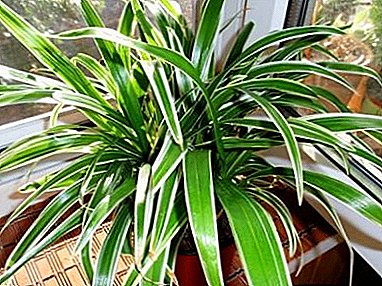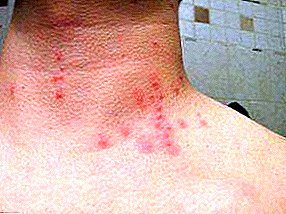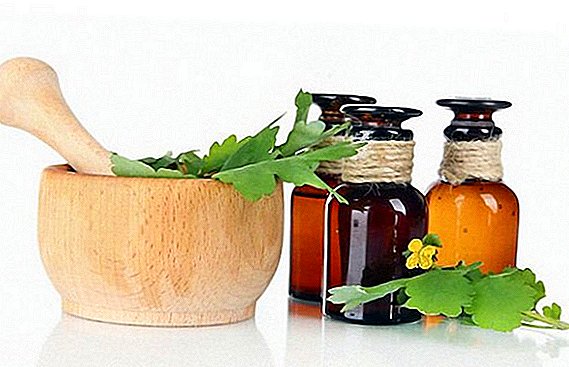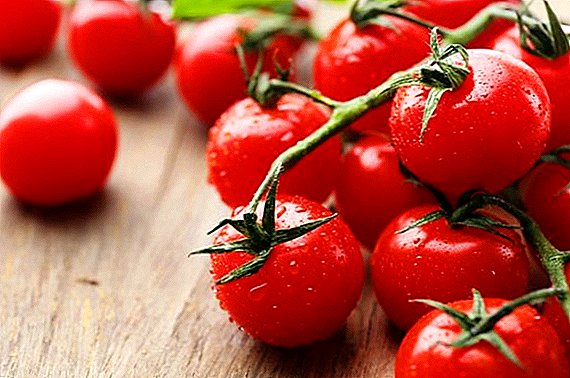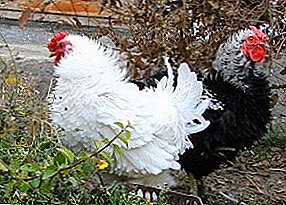
Curly breed of chickens has a decorative application and has been bred for at least several centuries.
The breed has a decorative and egg-and-meat purpose, it is distinguished by its average productivity, recognizable appearance and calm character. Curly chickens are also sometimes referred to as cobwebs.
Curly chickens - one of the most ancient ornamental breeds, origin - the countries of Southeast Asia and India, the exact time of appearance is unknown. In Russia, there is little spread.
General description of curly chickens
 Curly chickens - small in size. Comb - leaf-shaped or rosy, ear lobes medium, white, red rounded earrings.
Curly chickens - small in size. Comb - leaf-shaped or rosy, ear lobes medium, white, red rounded earrings.
Legs are feathered. Color - white, black, silver or brown. The body is wide and deep, the back and neck are medium. The wings are long, lowered. Tail disheveled, medium. The overall outlines are rounded.
The breed has two varieties: ordinary and dwarf. They differ only in the size of the bird. The dwarf curly is traditionally called bentams, like the dwarf other breeds.
Breed features
 A distinctive feature of curly chickens, as you might guess from the name, is curly, upturned plumage.
A distinctive feature of curly chickens, as you might guess from the name, is curly, upturned plumage.
The feather core has an arched shape, due to which the feather is bent upward, which gives the birds a disheveled and rather unusual look. The sign can be expressed to varying degrees: weak, medium or strong.
Breeds are birds with an average degree of curlysuch should be the majority.
If the breed divorces itself, only half of the chickens will have perfect plumage, a quarter of the chickens will receive weakly plumage from their parents, another quarter - heavily curled (these birds are also called "woolly", they have not the most presentable appearance because of excessively fragile plumage) .
In order to maintain the maximum number of high-grade chickens, the birds are bred, sitting down on the heavily curly chickens of slightly coarse cocks and vice versa.
By their nature, these are intimidating, curious and rather calm birds, they are easily tamed, willingly go in contact with a person, very friendly. Hatching eggs readily, but are not used as broods for rarer breeds.
Curly chickens do not have an increased appetite, despite their relatively high productivity, they are unpretentious in food.
Cultivation and maintenance
 Features of the content of these chickens are associated with their luxurious, but requiring constant care plumage.
Features of the content of these chickens are associated with their luxurious, but requiring constant care plumage.
It is worse than usual, it retains heat, therefore, when being kept without heating, a thick layer of flooring is necessary, and in cold regions heating of the coop is necessary. Particularly thermophilic chickens with a strong degree of curl. They also need more feed in the winter and autumn seasons.
Also curly feathers break easilytherefore some caution should be exercised in the equipment of the coop. These birds cannot be kept in cramped spaces, where they quickly break and lose some of their luxurious plumage.
Appearance may suffer as a result of mating or skirmishing, although in general curly chickens are peaceful and are not often inclined to clash.
When kept together with the rooster, the plumage of chickens will begin to suffer greatly after 3 months, the backs of the hens will go bald. The fragility of plumage and the degree of baldness in different birds is different and depends on the genetics. But in keeping and breeding, if you have a goal to have neat and beautiful birds, you should take some caution.
The content should take into account that chickens are practically unable to fly, so the roost should be arranged very low from the ground, and increased attention should be paid to litter for the floor.
It is better to equip warm nests in which birds can spend the night, or roost no more than 30 cm from the ground.
 Not one of the most well-known breeds of Moscow white chicken has pretty good performance.
Not one of the most well-known breeds of Moscow white chicken has pretty good performance.Another "risk factor" is moisture. The curly plumage is worse than the usual feather protects the bird from the rain, so there must be a strong canopy in the hen house.
But in general, it is impossible to call the breed whimsical, lovers rather successfully breed curly chickens: this breed is attractive combination of ease of keeping and breeding, rather high egg-yielding with an unusual appearance.
For the happy life of the bird will be enough strong warm chicken coop and a comfortable perch for a night rest., like most of the more common breeds.
The peculiarities include interesting results when crossed with other decorative breeds with an unusual structure of plumage.
When crossing a strong-curled rooster with a chicken with the usual plumage (or vice versa) half of the chickens will receive an average degree of curliness - the trait is very well transmitted when crossed with “smooth” breeds.
Specifications
 The weight of an adult rooster of the usual variety is 2.8-3 kg, chicken - 1.8-2.1 kg.
The weight of an adult rooster of the usual variety is 2.8-3 kg, chicken - 1.8-2.1 kg.
Egg production - 120 eggs per year, egg weight - 59 g, shell color - brown. Chicken run in 6 months. The safety of the young - 89%, adults - 92%.
Where to buy in Russia?
 In Russia, this breed can be called a rare, but an unusual appearance and unpretentiousness help curly chickens to gain more and more popularity.
In Russia, this breed can be called a rare, but an unusual appearance and unpretentiousness help curly chickens to gain more and more popularity.
In some farms, you can buy eggs and young curly chickens, but their prevalence varies greatly from region to region.
Here are a few farms that deal with curly chickens:
- Kursk farm Kukareku, tel: +7 (919) 174-46-47, address: Kursk, st. Dubrovinsky, 14;
- Perm farm IP Radosteva Tatyana Petrovna, tel: +7 (902) 800-32-70, e-mail: [email protected], address: Perm region, Dobryansky district, pos. Polazna ul.Nagornaya 19;
- farm, head Rudakova Maria, tel: +7 (912) 617-92-76, e-mail: [email protected], address: Sredlovskaya oblast, Ibrit.
In some regions you can also find curly chickens in small farms and private farmsteads.
Analogs
There are quite a few decorative breeds of chickens, here are just a few that, due to the unusualness of their plumage, may well compete with curly ones:
- Silk Chinese chickens are even more unusual.
Their plumage like thin wool very quickly gets wet and poorly protects from cold and dirt, which is why the breed requires dry bedding in the hen house and grazing on the grass. This breed is more capricious in its content, although it is well acclimatized in Russian conditions.
- Araucana - one of the most unusual breeds of chickens. These birds do not have a tail, because of which they have a recognizable silhouette and attract the attention of each guest at a glance at the compound.
Another feature - bluish (different shades, from turquoise to greenish) eggs. In the content of unpretentious, the only significant drawback - problems in mating due to the lack of a tail, the chickens have to do a kind of intimate hairstyle to increase the chance of fertilization of eggs.
- Another breed with a curly gene, but more extravagant - polish curly. In addition to curly feathers, it has a fluffy tuft, beard and cans, and as a whole it looks very elegant.
Due to the curly feathering, the problems in keeping are the same as for curly chickens. But Polish curly ones are smaller per kilogram and carry far fewer eggs, so it's hard to call an attractive working breed.
class = "egg"
 Alsace chickens are probably one of the rarest breeds in Russia. To find them today is very difficult, which is a sadness for knowledgeable poultry farmers.
Alsace chickens are probably one of the rarest breeds in Russia. To find them today is very difficult, which is a sadness for knowledgeable poultry farmers.Photos of the cage for quails are available at: //selo.guru/fermerstvo/soderzhanie/izgotovlenie-kletok-dlya-perepelov.html.
Among the decorative breeds curly - one of those that can be easily recommended even for a beginning poultry breeder.
Eternally ruffled chickens will decorate any compound, do not require special care, are well acclimatized in central Russia and are suitable for producing interesting breeds with breeds with ordinary plumage, while showing a fairly high productivity.


